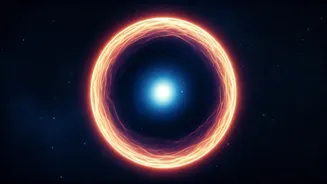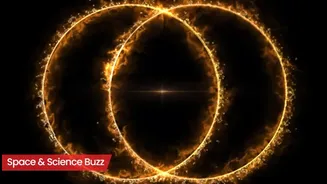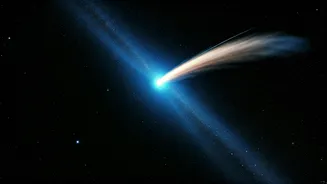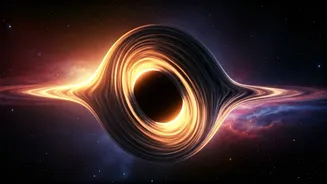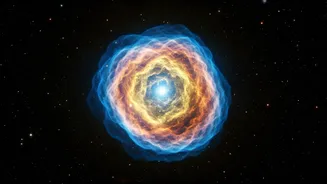Distant Radio Circle
Astronomers have made a significant discovery: an exceptionally distant and powerful Odd Radio Circle (ORC) in the universe. These ORCs are circular structures
emitting radio waves, and this particular one stands out due to its remoteness and intensity. The identification of such a distant object is a testament to the advancements in astronomical observation, allowing us to peer further into the early universe and understand the evolution of galaxies and the intergalactic medium. Research into the nature of this ORC will help clarify the formation of these enigmatic structures, potentially pointing towards cataclysmic events like galaxy mergers or the activity of supermassive black holes at their centers. The implications of this discovery are significant as it potentially opens new avenues for understanding the distribution of matter and energy in the cosmos, as well as the interactions between galaxies over vast distances.
Hidden Planet Detected
Beyond Neptune, scientists have detected signs of a potentially Earth-sized planet, adding a thrilling chapter to the search for undiscovered worlds within our solar system. The evidence points towards Planet X, a hypothetical celestial body yet to be directly observed. The possibility of a hidden planet challenges our current models of the solar system's formation and structure. The challenge lies in the detection of such a distant and faint object, which would require utilizing advanced observational techniques, including sophisticated telescopes and innovative data analysis methodologies. Further investigation would not only unveil new insights into the arrangement of our solar system but also provide hints on the dynamics of planetary systems in general. This discovery is a prime example of how the pursuit of knowledge and advanced technology drives our understanding of the universe and encourages the exploration of regions previously considered well understood.
Pulsars and Waves
Observations of pulsars are being used to explore gravitational wave interference, offering another fascinating area of research. Pulsars, the rapidly spinning neutron stars, emit beams of electromagnetic radiation, acting like precise cosmic clocks. By observing the fluctuations in the timing of these pulses, researchers hope to detect the subtle distortions of spacetime caused by gravitational waves, which are ripples from massive cosmic events like the merging of black holes. The capacity to study gravitational waves in this manner would open up new possibilities for astrophysics, allowing scientists to observe the most violent and energetic happenings in the universe. The potential to perceive and analyze the effect of these waves will reveal essential facts about the fundamental forces shaping cosmic structures and the physics of extreme events, such as the merging of black holes.
Solar Storms' Impact
The recent solar activity has led to a rare disconnection event, where a burst of solar wind caused a significant portion of Comet Lemmon's tail to be severed. Additionally, four separate solar eruptions this week may produce minor geomagnetic activity, creating a fascinating natural display in our skies. The solar wind’s direct impact on the tail of a comet is not only a captivating demonstration of the dynamic forces at play in our solar system but also provides scientists with a distinct opportunity to analyze the structure and composition of cometary tails. The consequences of solar activity on Earth, such as auroras, are a testament to how the space weather can influence our planet. These events also help us learn how space weather affects technological systems and can improve our ability to predict and prepare for significant solar eruptions.
